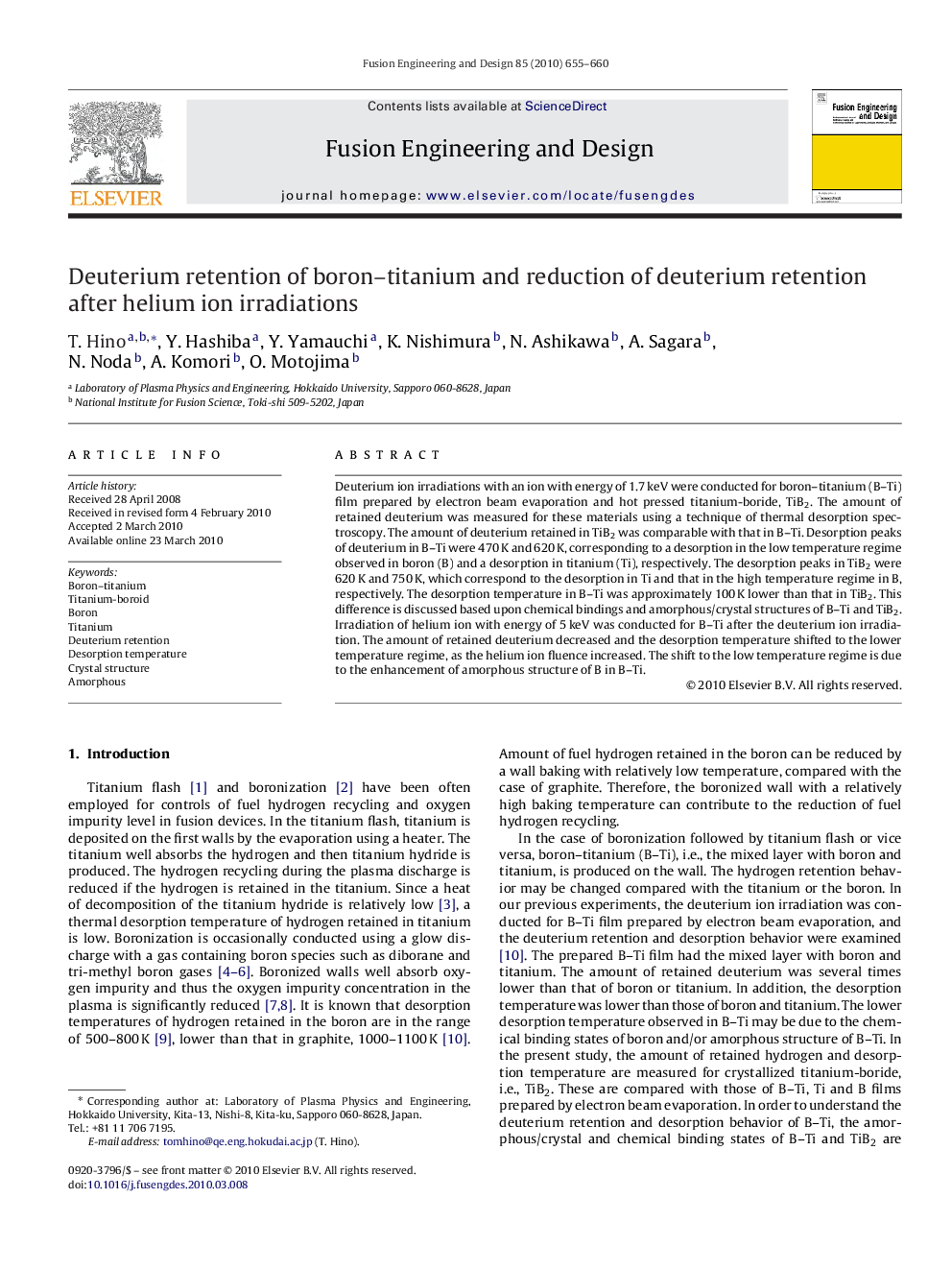| Article ID | Journal | Published Year | Pages | File Type |
|---|---|---|---|---|
| 272591 | Fusion Engineering and Design | 2010 | 6 Pages |
Deuterium ion irradiations with an ion with energy of 1.7 keV were conducted for boron–titanium (B–Ti) film prepared by electron beam evaporation and hot pressed titanium-boride, TiB2. The amount of retained deuterium was measured for these materials using a technique of thermal desorption spectroscopy. The amount of deuterium retained in TiB2 was comparable with that in B–Ti. Desorption peaks of deuterium in B–Ti were 470 K and 620 K, corresponding to a desorption in the low temperature regime observed in boron (B) and a desorption in titanium (Ti), respectively. The desorption peaks in TiB2 were 620 K and 750 K, which correspond to the desorption in Ti and that in the high temperature regime in B, respectively. The desorption temperature in B–Ti was approximately 100 K lower than that in TiB2. This difference is discussed based upon chemical bindings and amorphous/crystal structures of B–Ti and TiB2. Irradiation of helium ion with energy of 5 keV was conducted for B–Ti after the deuterium ion irradiation. The amount of retained deuterium decreased and the desorption temperature shifted to the lower temperature regime, as the helium ion fluence increased. The shift to the low temperature regime is due to the enhancement of amorphous structure of B in B–Ti.
